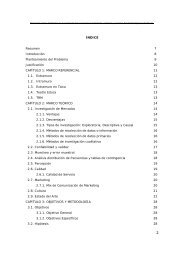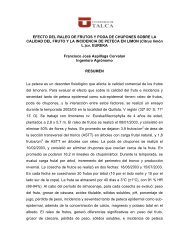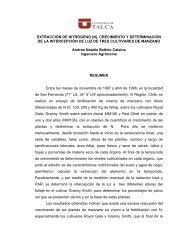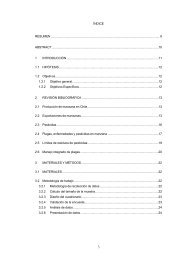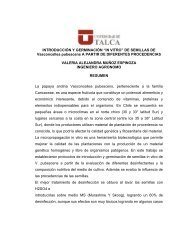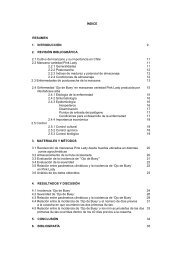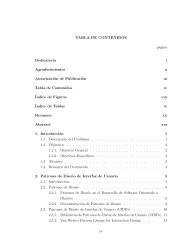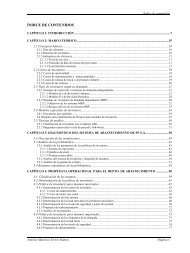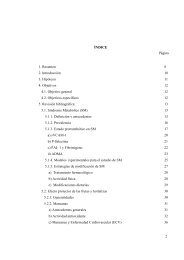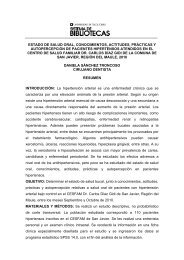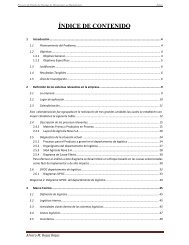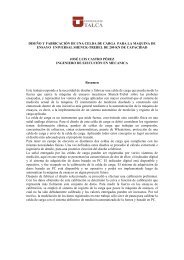EFECTO DEL pH Y EL HIERRO EN LA OXIDACIÓN DEL VINO ...
EFECTO DEL pH Y EL HIERRO EN LA OXIDACIÓN DEL VINO ...
EFECTO DEL pH Y EL HIERRO EN LA OXIDACIÓN DEL VINO ...
You also want an ePaper? Increase the reach of your titles
YUMPU automatically turns print PDFs into web optimized ePapers that Google loves.
ABSTRACT<br />
Red wine oxidation is a complex series of reactions that can determine both<br />
positive and negative sensory changes. This report aims to contribute to the<br />
knowledge in this area, evaluating the consequences of oxidation in some of the<br />
components of red wine. The proposed tests were used to evaluate the effect of<br />
<strong>pH</strong> (3 and 4), oxygen (through the use of aeration or nitrogen gas) and iron<br />
(without adition, versus the addition of 5 mg/L) on the phenolic content, color<br />
index, and free an total sulfur dioxide (SO2) concentration. The variables<br />
studied produced eight treatments, whose effects were monitored during 18<br />
days. The results obtained were statistically evaluated using the software<br />
package Statgraphics plus 5.1. From the analysis, significant differences were<br />
observed in some of the measurements of color index, free and total SO2. The<br />
most obvious effects of oxidation, observed as increased consumption of sulfur<br />
dioxide, was obtained in aerated wines, at <strong>pH</strong> 4 and in the presence of iron.<br />
Regarding the content of polyphenols, there were no significant differences,<br />
which could be attributed to the slower evolution of this compounds, requiring<br />
more time to see measurable results. From these results, we confirm that red<br />
wines should have a limited exposure to oxygen, low <strong>pH</strong>, and low<br />
concentrations of iron, in order to restrict a rapid oxidation.



